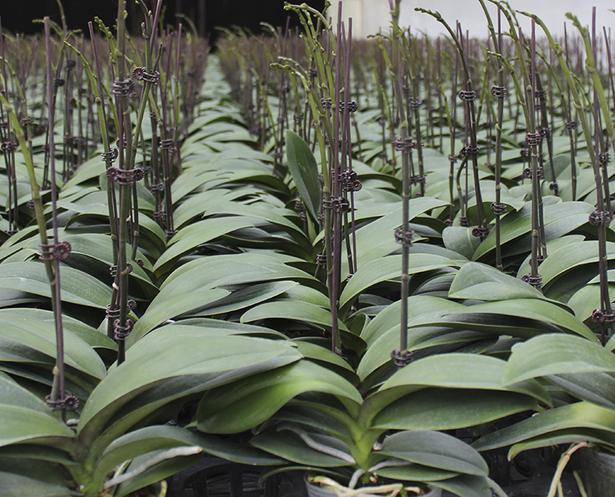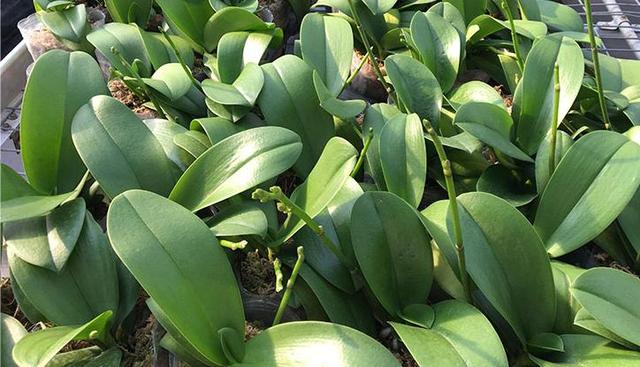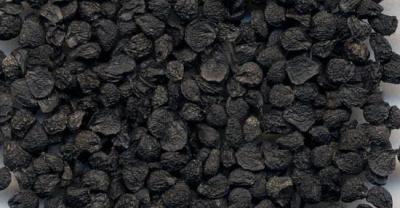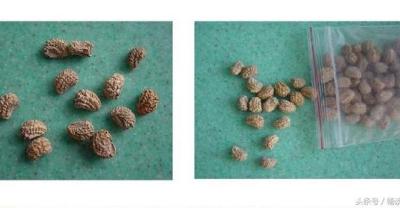Comprehensive Cultivation Techniques of Phalaenopsis
Comprehensive planting techniques of Phalaenopsis (part I)
This paper briefly analyzes the effects of a series of physiological metabolism on the growth of Phalaenopsis, such as nutrient absorption and utilization, photosynthesis and respiration. Plant growth is a comprehensive process, and any condition is indispensable.

Nutrient absorption
The roots and leaves of Phalaenopsis are organs that absorb nutrients. The way that the leaf absorbs fertilizer is different from that of the root. There is a special tissue called "stomata" on the surface of the leaf. The fertilizer sprinkled on the leaf enters each cell of the plant through the stomata to operate. The cuticular layer of the leaf epidermis can also absorb fertilizer through osmosis, but the amount of absorption is very small, so spray foliar fertilizer to the back of the leaf as far as possible. Why are we talking about "stomata"? In fact, it has something to do with the photosynthetic form of Phalaenopsis. Phalaenopsis belongs to CAM plant, which avoids radiation and high evapotranspiration during the day and opens stomata to absorb carbon dioxide needed for photosynthesis in cool night, so Phalaenopsis grows fastest in cool spring and autumn. In the daytime, Phalaenopsis photosynthesis efficiency decreased or even stagnated because of stomatal closure, so if foliar fertilizer is to be sprayed, it is best to do it when the temperature drops after 4:30 in the afternoon, so that the stomatal absorption effect is the best. The low photosynthesis of CAM plants causes Phalaenopsis to grow more slowly than other flowers, so Phalaenopsis grows fastest in March to July and August to October in northern Phalaenopsis. In hot summer and winter with low average light, Phalaenopsis grows most slowly.
According to the statistics of some practitioners, the fertilizer absorbed by the root of Phalaenopsis accounts for 70% to 80% and the fertilizer absorbed by leaves accounts for 15% to 20%, so the root system directly affects the health of Phalaenopsis plants. Roots mainly absorb nitrogen, phosphorus and potassium plasma compounds dissociated from water in the medium, but most of the nutrients needed for plant growth are not grown through fertilizers absorbed by roots and leaves, but through their own photosynthesis. More than 90% of the dry matter in orchid plants accumulates through photosynthesis.
Therefore, the growth of Phalaenopsis in the north is obviously slower than that in the south in winter, because in addition to the proper temperature, the light in the south is obviously better than that in the north. No matter how high the temperature is and what proportion of fertilizer is used in the greenhouse in winter in the north, it has no practical effect in the case of insufficient light.
Because the root is the main organ of Phalaenopsis to absorb fertilizer, the degree of dryness and humidity of the medium, pH value and EC value all directly affect the absorption of various elements. The pH value of Phalaenopsis medium is acidic, which is beneficial to the absorption of various elements; when the pH value is between 4.5 and 6, the fertilizer effect is the best, especially iron, copper, manganese and zinc when the pH value is less than 6; but once the pH value is too low (below 4), it will hinder the absorption of some elements and cause damage to the epidermal cells of the root. The best fertilization time is before 10:00 and after 4 p.m., there is no clear time requirement in the normal maintenance of Phalaenopsis, but try not to apply fertilizer when the light is strong and it is cloudy and rainy. Because most practitioners now use water purification equipment, there is basically no problem with the water quality.
The following is a brief analysis of the effects of a large number of elements, medium elements and trace elements on Phalaenopsis. A large number of elements include nitrogen, phosphorus, potassium, carbon and hydrogen, in which carbon comes from carbon dioxide in the air, hydrogen comes from water, and the rest must be absorbed through roots and leaves. The main medium elements are magnesium, calcium and sulfur. Trace elements include iron, zinc, manganese, copper, boron, chlorine and so on.
Nitrogen is the basic component of various substances (protein, chlorophyll, nucleic acid, etc.). For Phalaenopsis, appropriate amount of nitrogen fertilizer can be increased at seedling stage to increase leaf growth potential, but 3.5 inch mature seedlings basically do not need to supplement nitrogen fertilizer specially. If the nitrogen fertilizer is excessive, the orchid seedlings grow vigorously and the leaves are thick green, which is easy to grow, which leads to the elongation of flower spacing and the decrease of flower number during flowering (inhibition of vernalization). In the small and middle seedling stage, if the nitrogen fertilizer is excessive, it will lead to serious diseases and insect pests, and lead to potassium deficiency, calcium, magnesium, boron and other symptoms. Therefore, the practitioners concluded: nitrogen fertilizer long leaves, potash fertilizer strong stems and strong roots, phosphate fertilizer promote flowering and fruiting.
Phosphorus is a component of nucleic acid, adenosine phosphate and inositol hexaphosphate. Adenosine phosphate is an energy carrier. Inositol hexaphosphate makes plants form seeds and fruits and other reproductive organs, so phosphorus can promote plant vernalization. The use of high phosphate fertilizer one and a half months before flowering can promote Phalaenopsis to enter vernalization and improve the flowering quality of Phalaenopsis. In the young stage of Phalaenopsis, phosphate fertilizer can promote root growth (phosphorus mainly promotes the division and proliferation of root growth point cells), but if excessive phosphate fertilizer, it will lead to the lack of iron, zinc, magnesium, copper and other elements, and affect the upward transport of Phalaenopsis hormones, so as to inhibit flower bud formation, make Phalaenopsis mature ahead of time, and finally lead to the reduction of flowering. Lack of phosphate fertilizer will lead to poor root growth, dwarf plants and slender leaves and stems of Phalaenopsis.
Potassium promotes the transport of nutrients such as sugar, promotes photosynthesis, promotes the conversion of small molecules such as sugars and amino acids into macromolecules such as cellulose, lignin and protein, and increases nutrition accumulation. Therefore, the production of Phalaenopsis should increase the amount of potash fertilizer, which can promote the thick and straight leaves, stout stems (with appropriate light intensity), bright flowers and colors, and significantly improve the product quality. Potash fertilizer can resist lodging, drought and cold. If potash fertilizer is used too much, it will make Phalaenopsis insensitive to low temperature stimulation and lead to lack of calcium, magnesium and other nutrients. Therefore, Phalaenopsis practitioners in Taiwan now intend to increase the use of potash in Phalaenopsis large, medium, small and medium-sized seedlings and during flowering.
Some practitioners believe that phosphate fertilizer is only the medium to promote the vernalization of Phalaenopsis, and the effect of potash fertilizer is greater than that of phosphate fertilizer in directly affecting the flowering quality of Phalaenopsis. Therefore, 10-45-15 and 15-10-30 fertilizers were used alternately in the early stage of Phalaenopsis seedlings, 10-30-20 and 15-10-30 fertilizers were used before flowering stage, and 20-20-20 and 15-10-30 fertilizers were used alternately after pedicels. Lack of potassium fertilizer will lead to slow growth and underdeveloped mechanical tissue of Phalaenopsis, especially in the stem of Phalaenopsis. The thinning of cell wall can easily infect various diseases, resulting in the decline of plant disease resistance, yellowing and scorching of leaf edges.

Magnesium is the main mineral element of plant chlorophyll, which directly affects plant photosynthesis and the synthesis of sugar and protein. Therefore, in the months with strong photosynthesis, especially in summer, magnesium fertilizer 15-5-15+Ca+Mg should be increased appropriately.
Calcium is one of the main components of plant cell wall and cell membrane. Calcium stabilizes cell wall, strengthens cell structure, enhances plant disease resistance, and regulates intracellular pH value, which is consistent with magnesium.
Sulfur not only participates in the synthesis and metabolism of protein and fat, but also affects the synthesis of chlorophyll in Phalaenopsis. General producers will not deliberately supplement sulfur, the fertilizer used can meet the needs of plant growth.
Iron is a component of ferrothionein and other enzymes, which plays a redox role in two important metabolism: photosynthesis and respiration. When the iron element is excessive, the plant will appear the following symptoms: Brown spot on the leaf edge and leaf tip, dark green leaf color, gray-black root system, and easy to rot.
Zinc plays an important role in plant photosynthesis, respiration, protein synthesis and hormone synthesis, and can promote auxin synthesis (indoleacetic acid), protect root surface and internal cells, and improve plant drought resistance. After excessive zinc, the green tissue of Phalaenopsis will lose green and turn gray-white, brown spots will appear at the bottom of stems, petioles and leaves, and the roots are short and rare.
Manganese is a component of many enzymes, which can promote the oxidative decomposition of indole acetic acid. Excessive manganese will inhibit plant growth and hinder the absorption of iron and calcium, resulting in albino or purple leaf margin, curly new leaves, brown roots and few new roots.
Copper is a component of a variety of enzymes that participate in protein and sugar metabolism, stabilize chlorophyll, prevent premature destruction of chlorophyll, participate in respiratory metabolism and the formation of nitrogen-fixing nodules. Excessive copper will lead to iron deficiency in plants.
Boron can promote the transport of sugar and auxin, and promote the development of plant reproductive organs. Boron and calcium work together to form an intercellular glue structure, maintain the integrity of cell wall structure, and enhance plant cold resistance and disease resistance. Excessive boron can lead to potassium deficiency in plants.
Chlorine maintains charge balance with cations, maintains pH value, maintains cell swelling, and regulates stomatal closure with potassium to balance photosynthesis and water transpiration. Excessive chlorine will make the plant grow slowly, short, the leaves are small and yellow, the leaf edges scorch and roll up, and the old leaves and root tips die.
Various elements play different roles in the growth of Phalaenopsis. The concentration of fertilizer used in production should be controlled according to the environment, seedling specifications and variety characteristics of each orchid farm.
As all plants have "stress resistance", how to "press roots" in Phalaenopsis production is a typical example of stress resistance. When just changing the cup, it is necessary to deliberately control the dryness and humidity of the medium, so as to promote Phalaenopsis seedlings to split more new roots, which is convenient for healthy growth in the later stage. However, the amount of ions in the medium water affects the absorption of various fertilizer elements, so when just changing the cup, try to use high multiple fertilizer, 4000 to 5000 times, because during this period, the absorption efficiency of fertilizer is on the low side, if the concentration is too high, it may lead to excessive EC value in the medium, which will adversely affect the growth of orchid seedlings.

Comprehensive planting techniques of Phalaenopsis (continued)
- Prev

How does Xiaobai grow passion fruit?
Passion fruit is a kind of fruit with high nutritional content, which is called the king of all fruits. Nowadays, many beverage stores use it as their main brand, which is popular with people.
- Next

Planting methods of potted rich bamboos
Potted bamboo is a common potted plant, which is mainly divided into two kinds: hydroponic culture and substrate culture. at present, hydroponic culture is the most suitable.
Related
- Fuxing push coffee new agricultural production and marketing class: lack of small-scale processing plants
- Jujube rice field leisure farm deep ploughing Yilan for five years to create a space for organic food and play
- Nongyu Farm-A trial of organic papaya for brave women with advanced technology
- Four points for attention in the prevention and control of diseases and insect pests of edible fungi
- How to add nutrient solution to Edible Fungi
- Is there any good way to control edible fungus mites?
- Open Inoculation Technology of Edible Fungi
- Is there any clever way to use fertilizer for edible fungus in winter?
- What agents are used to kill the pathogens of edible fungi in the mushroom shed?
- Rapid drying of Edible Fungi

